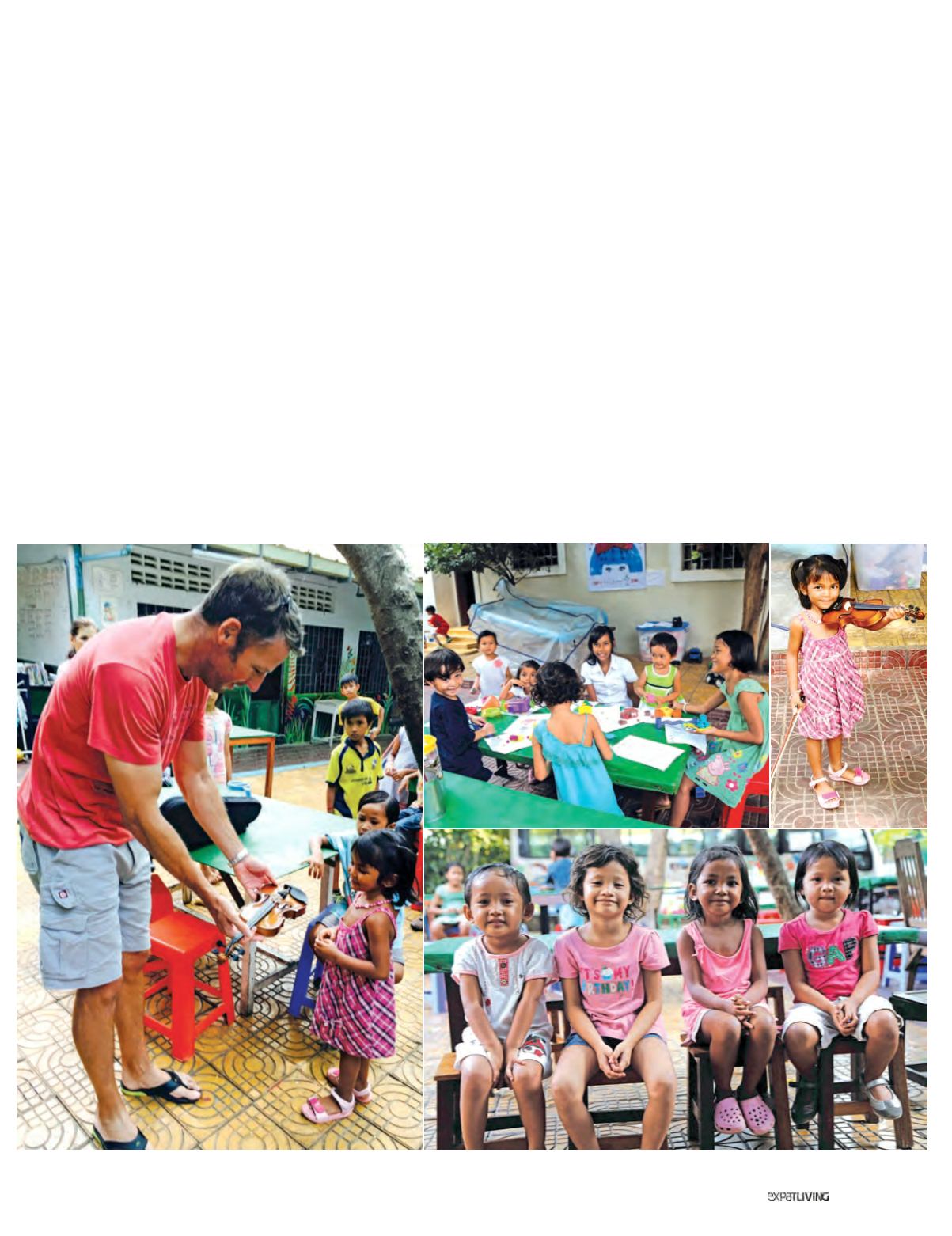

CHARITY
169
May15
Sok Sabay, Cambodia
Nine of the first group of Cambodian
children Marie rescued 15 years ago
graduated from university in Phnom
Penh in the past year, she tells me
with an enormous smile and obvious
pride. She recalls the mother of a girl,
just graduated as a pharmacist, who,
when questioned by Marie about her
daughter’s future, suggested she would
sell her to feed her younger son. To which
Marie emphatically replied, “Maybe there
is something else you can do instead.”
Marie dates her soft spot for the
Cambodian people back to 1981, when
she nursed at a UN refugee camp on the
Thai-Kampuchea border. “Of course,”
she says, “the Vietnamese people were
struggling in the 1980s, but for the
Cambodians it was even more terrible,
under the brutal communist regime of
the Khmer Rouge where deportation
and starvation were common.
“In 1983 I jumped at the chance to
enter Cambodia with aGerman journalist
to film
Kampuchea the Third Liberation
,
the only documentary in existence
which covers this period. Naturally, I was
scared – the country was still closed at
that time, I had no ambassador, and
it was only a few years after the fall of
the Khmer Rouge, who controlled the
country from 1975 to 1979. But what we
saw was extraordinary.”
She returned in 1987 to work with the
Japan International Volunteer Centre,
and by the mid-90s had decided to
build her own independent project, with
support from generous international
benefactors.
She opened the door of Sok Sabay
Organisation firstly to young prostituted
children, later expanding to help as many
neglected children as possible. “We take
the worst cases of child abuse: victims
of torture, enslavement, abandonment,
starvation – mostly at the hands of their
own parents. As the second generation of
Khmer Rouge genocide survivors, their
parents are lost to the brutality, slavery
and anger with which they were raised.”
Marie works one-on-one to rehabilitate
the children, instilling resilience to
help them overcome their traumatic
pasts. “It can take six or seven years to
communicate with a child, for them to
accept themselves, even to look in the
mirror. When they come to the shelter,
some are mentally dying because of
what they have seen and experienced.”
Fun at Sok Sabay in Phnom Penh



















